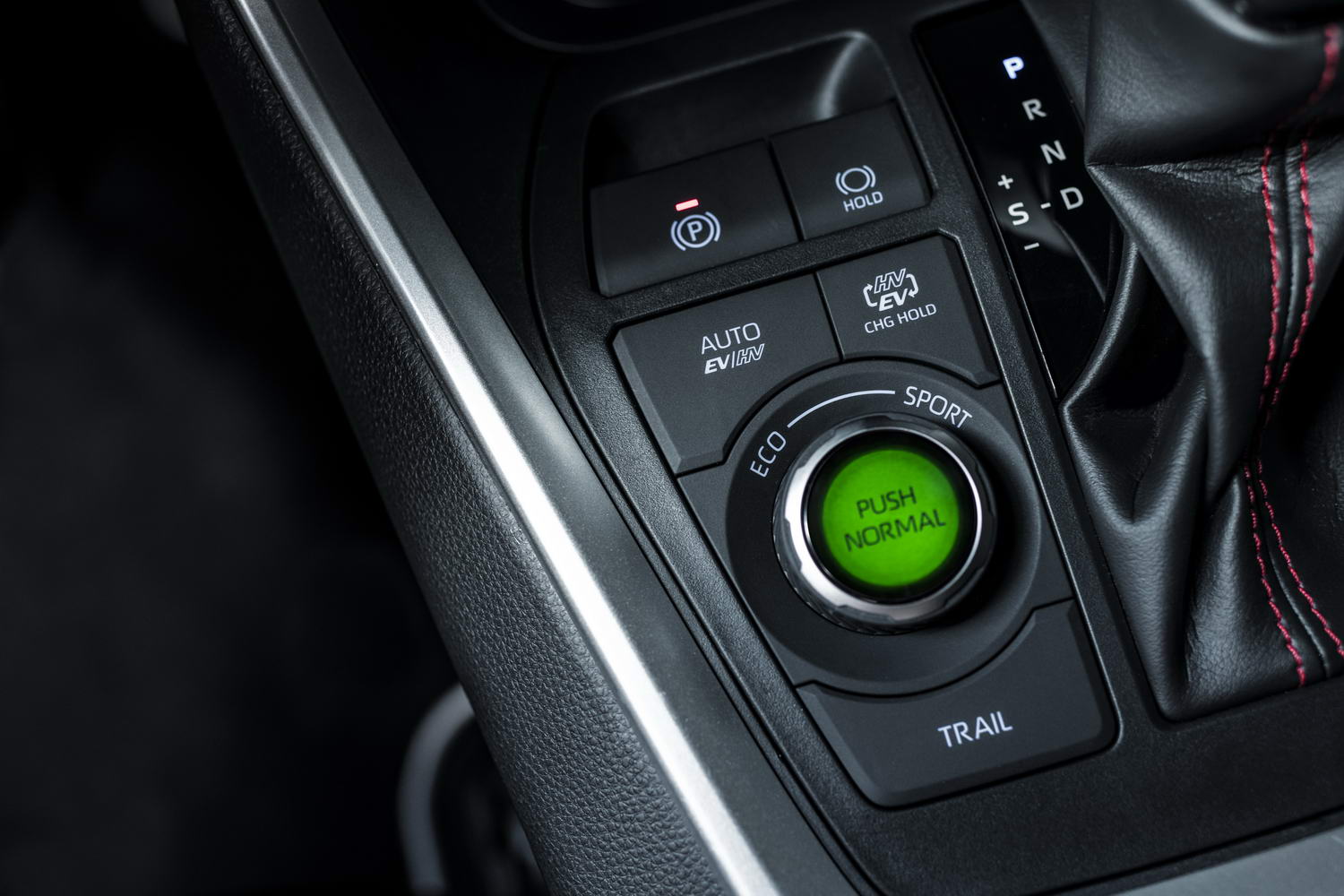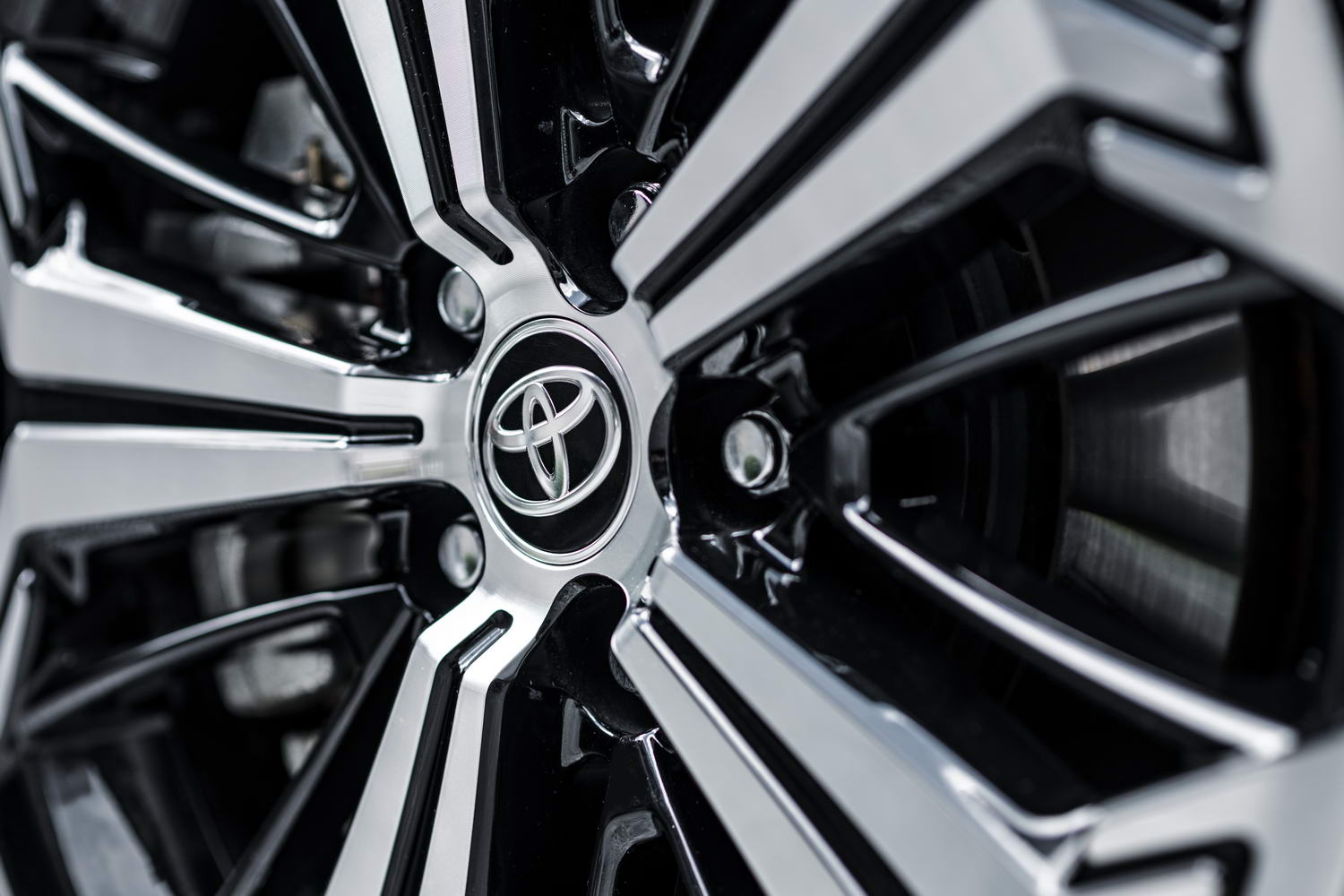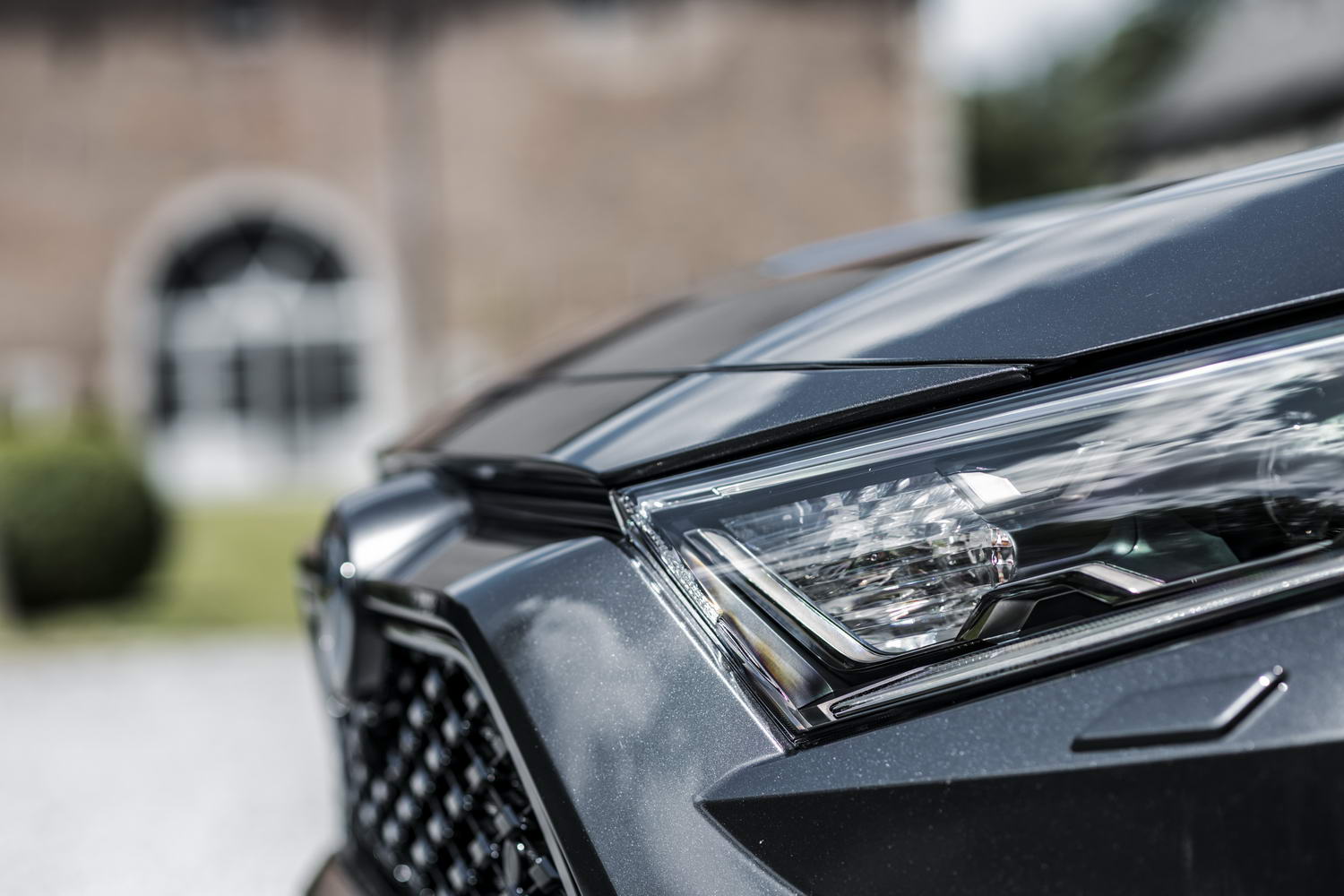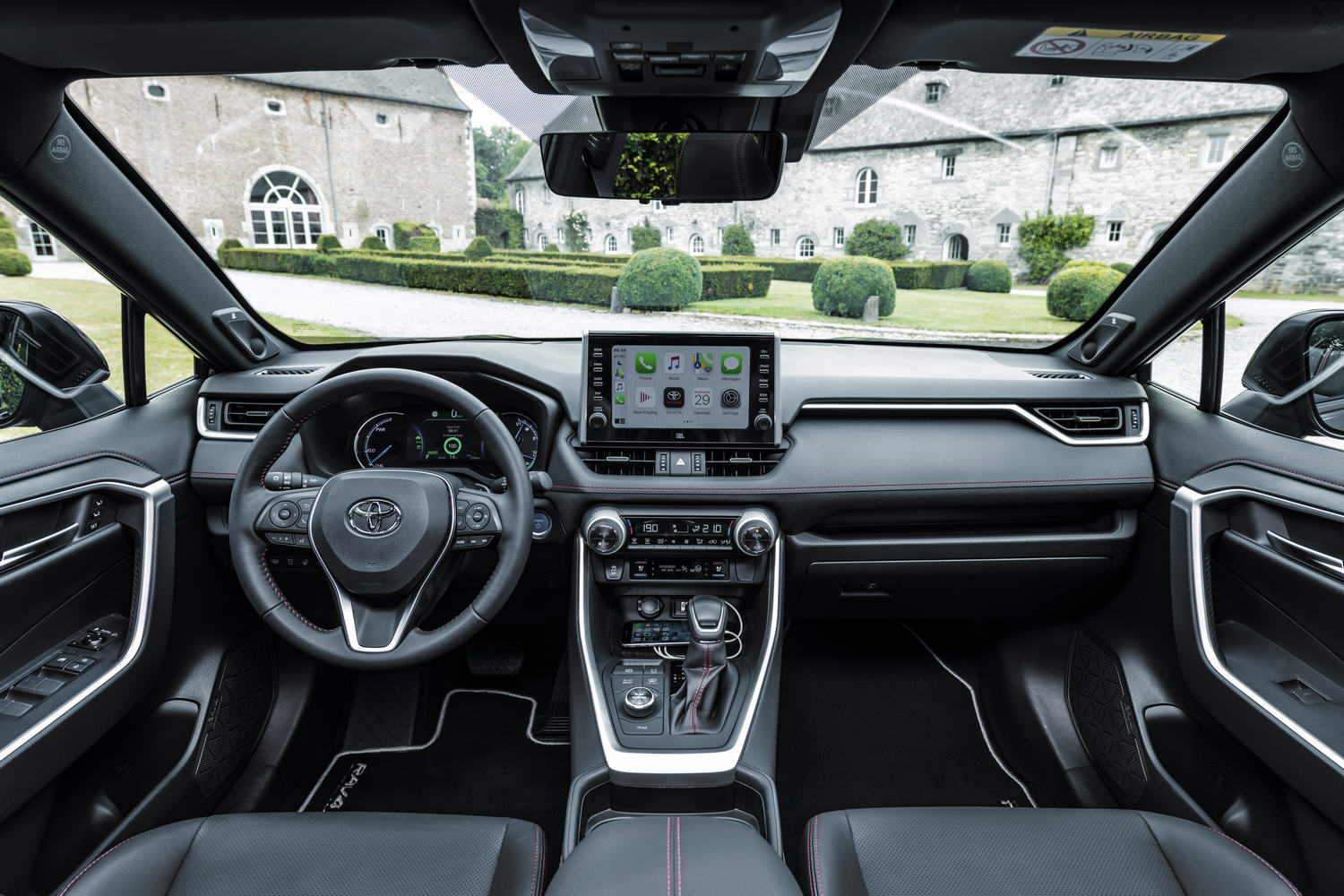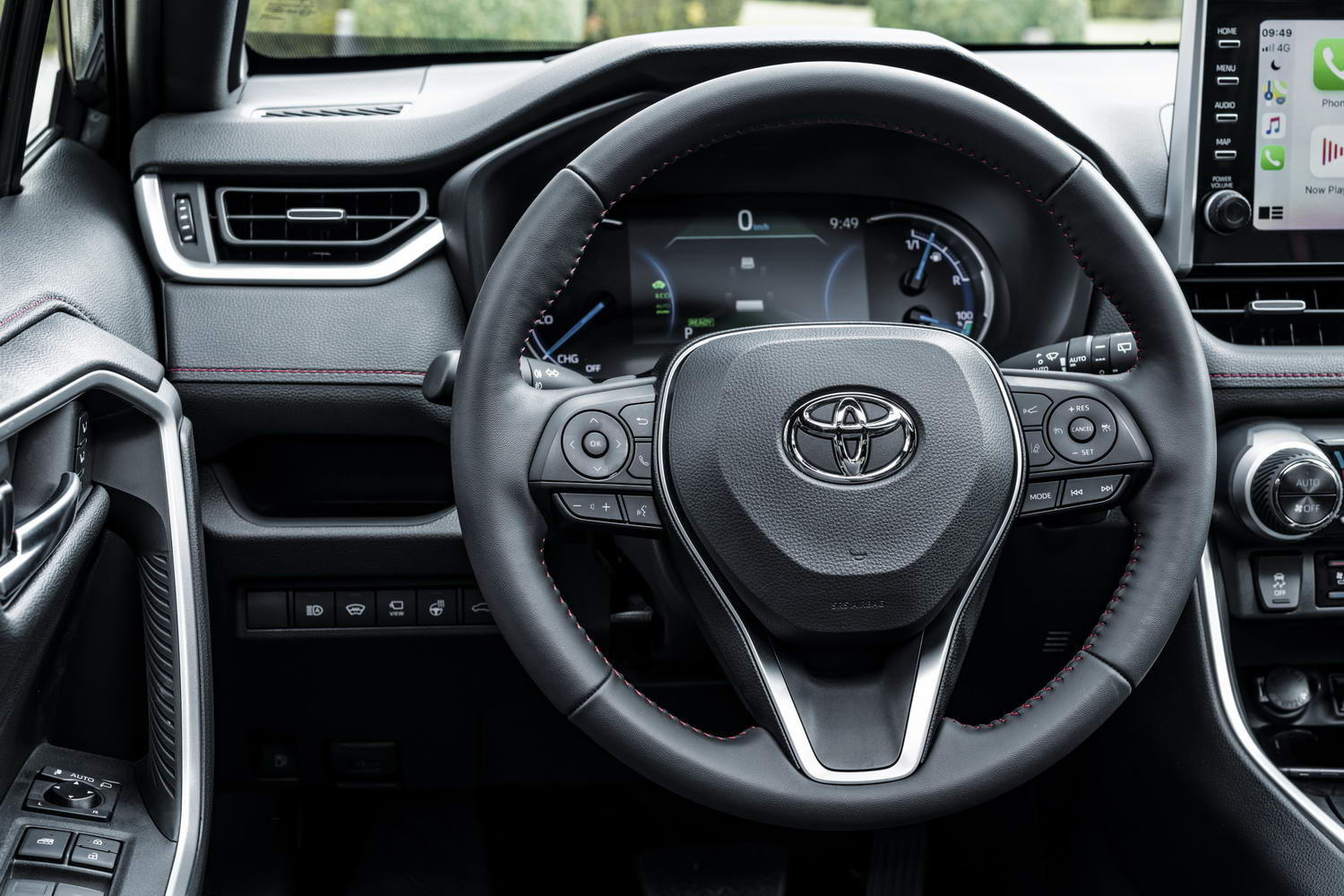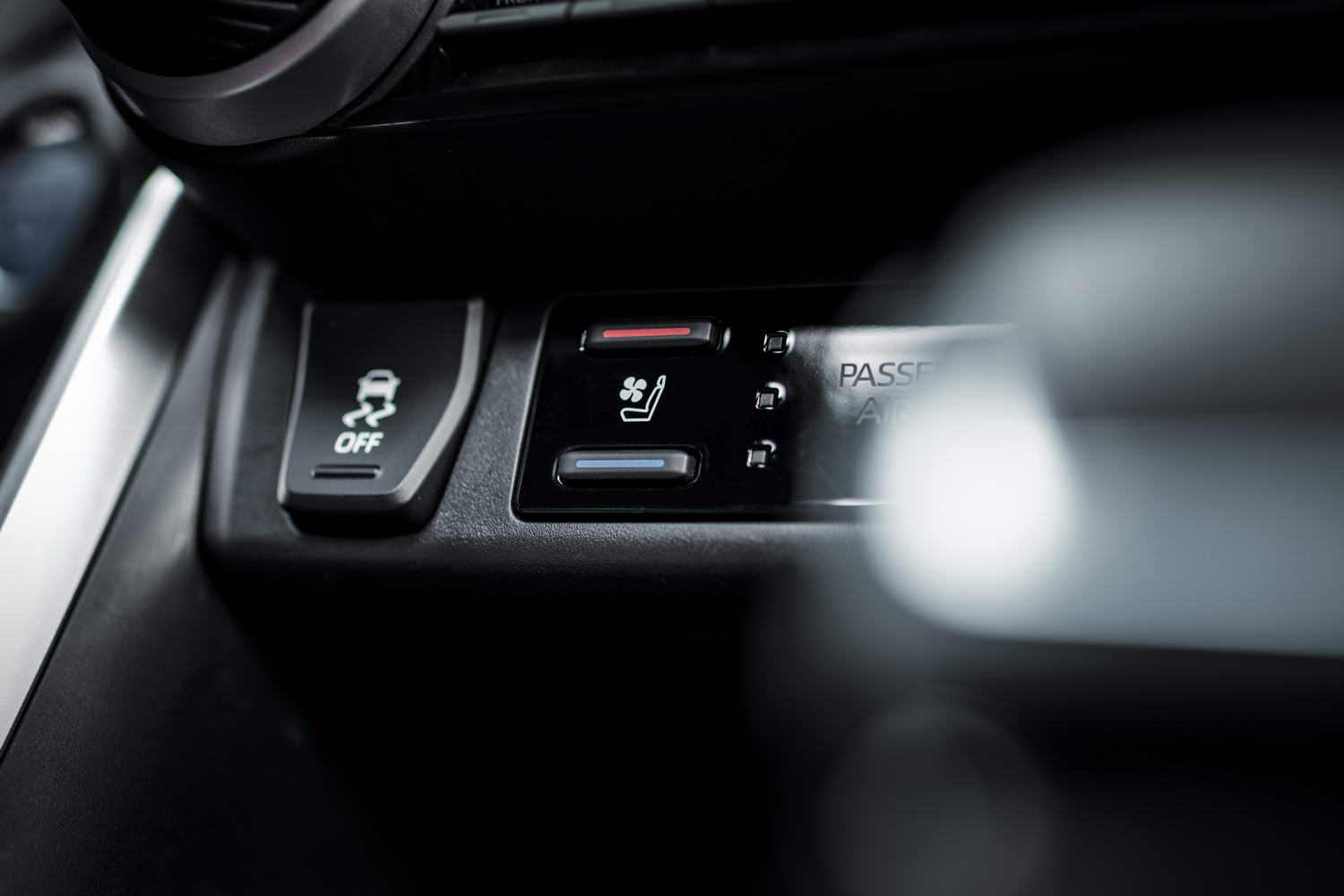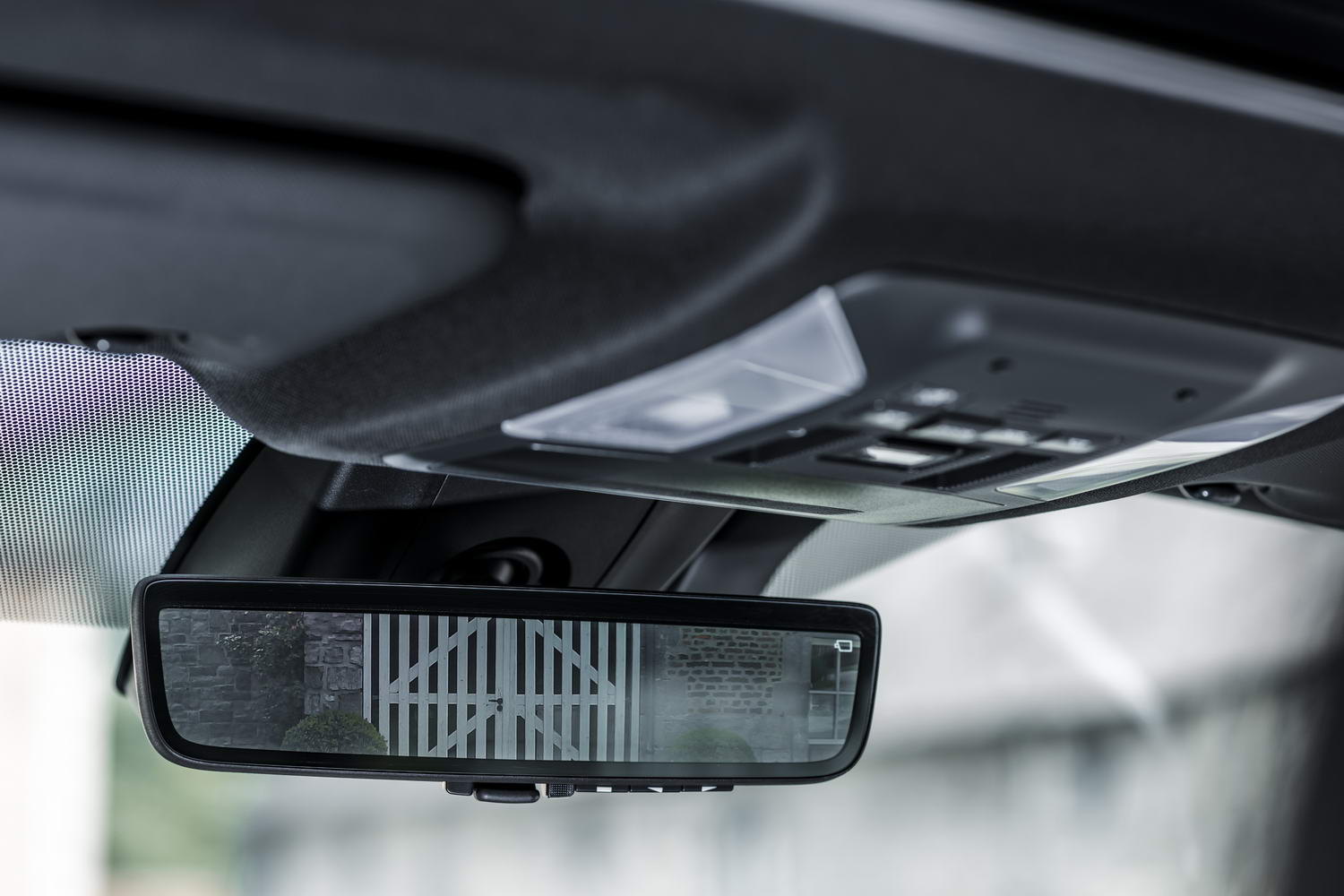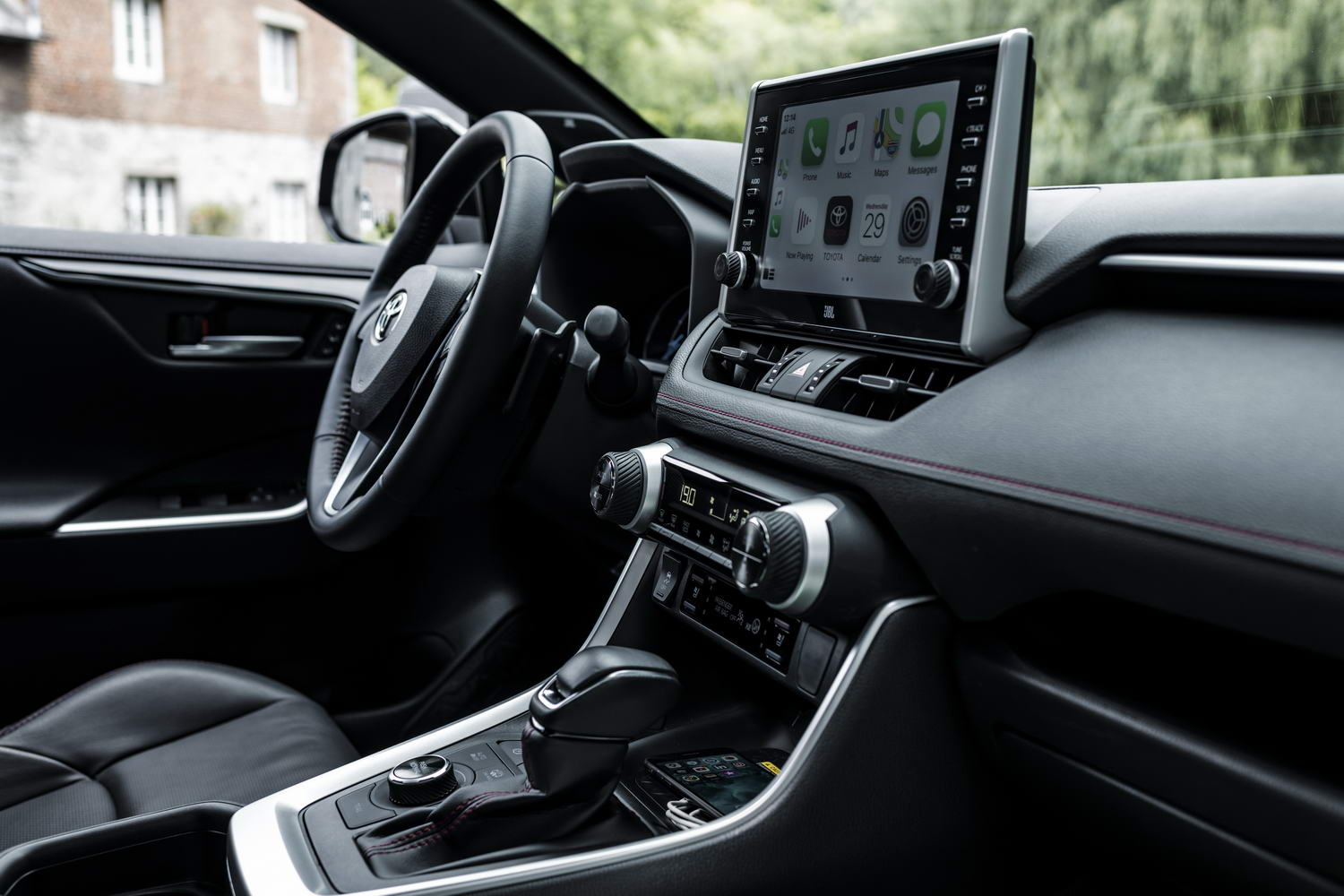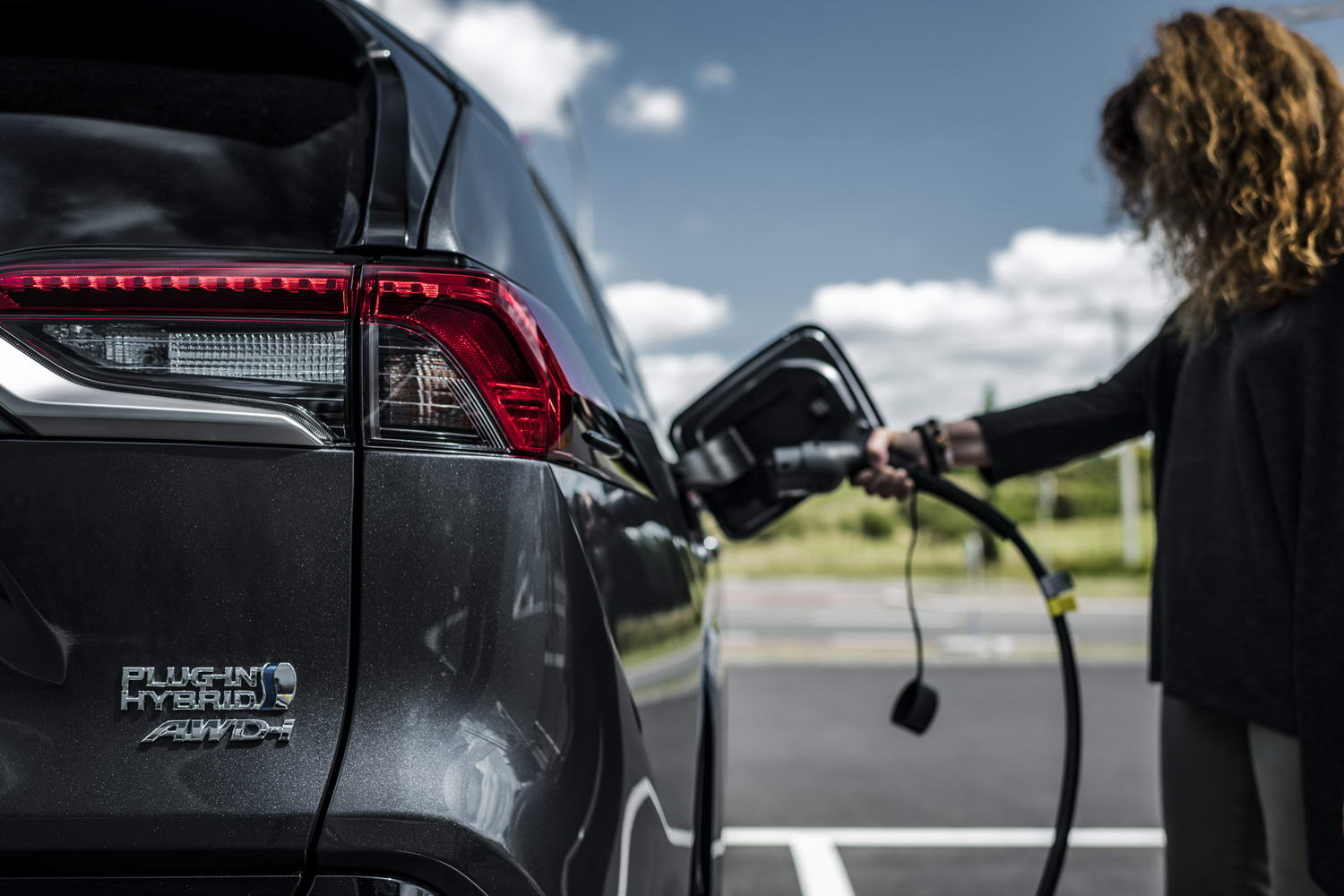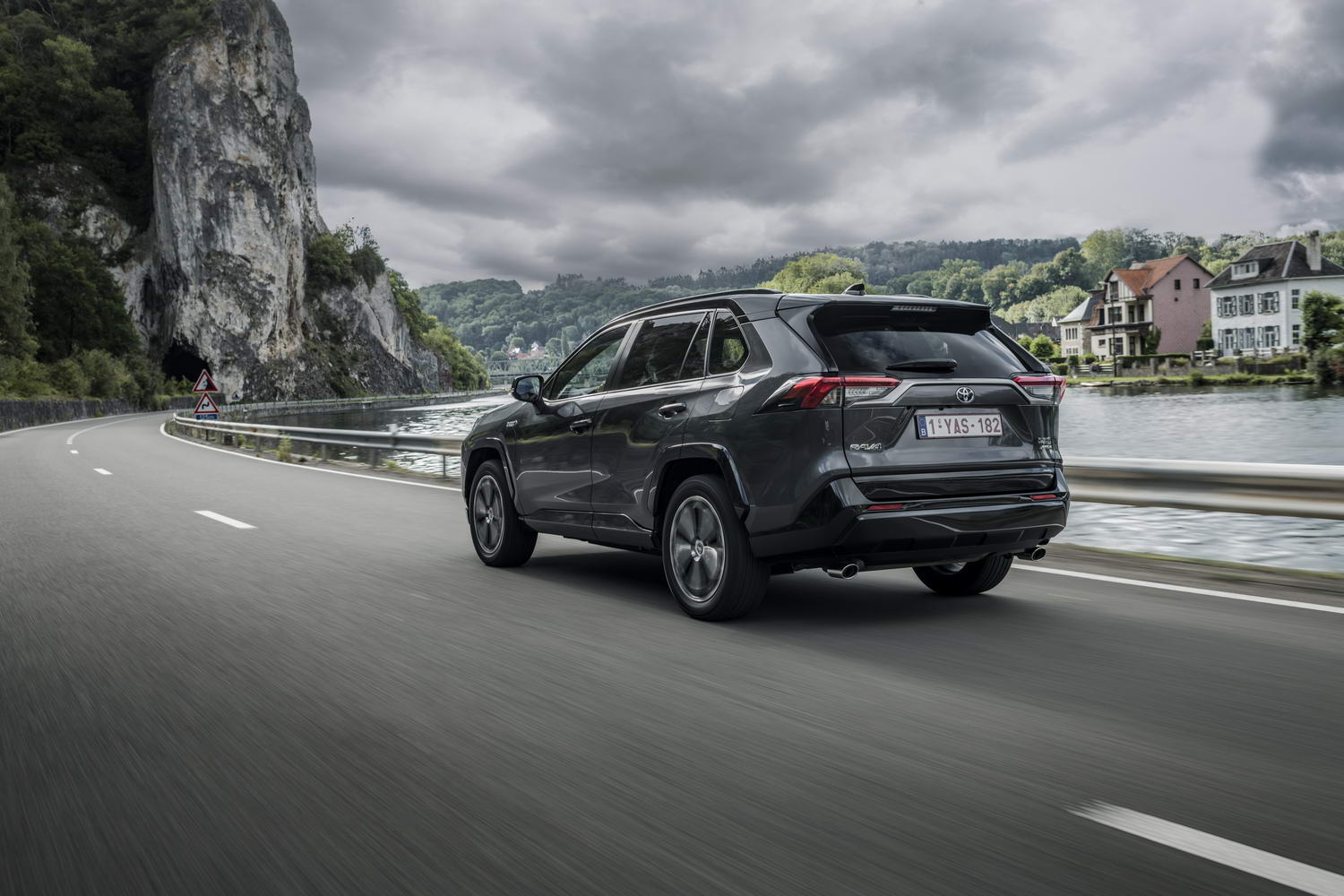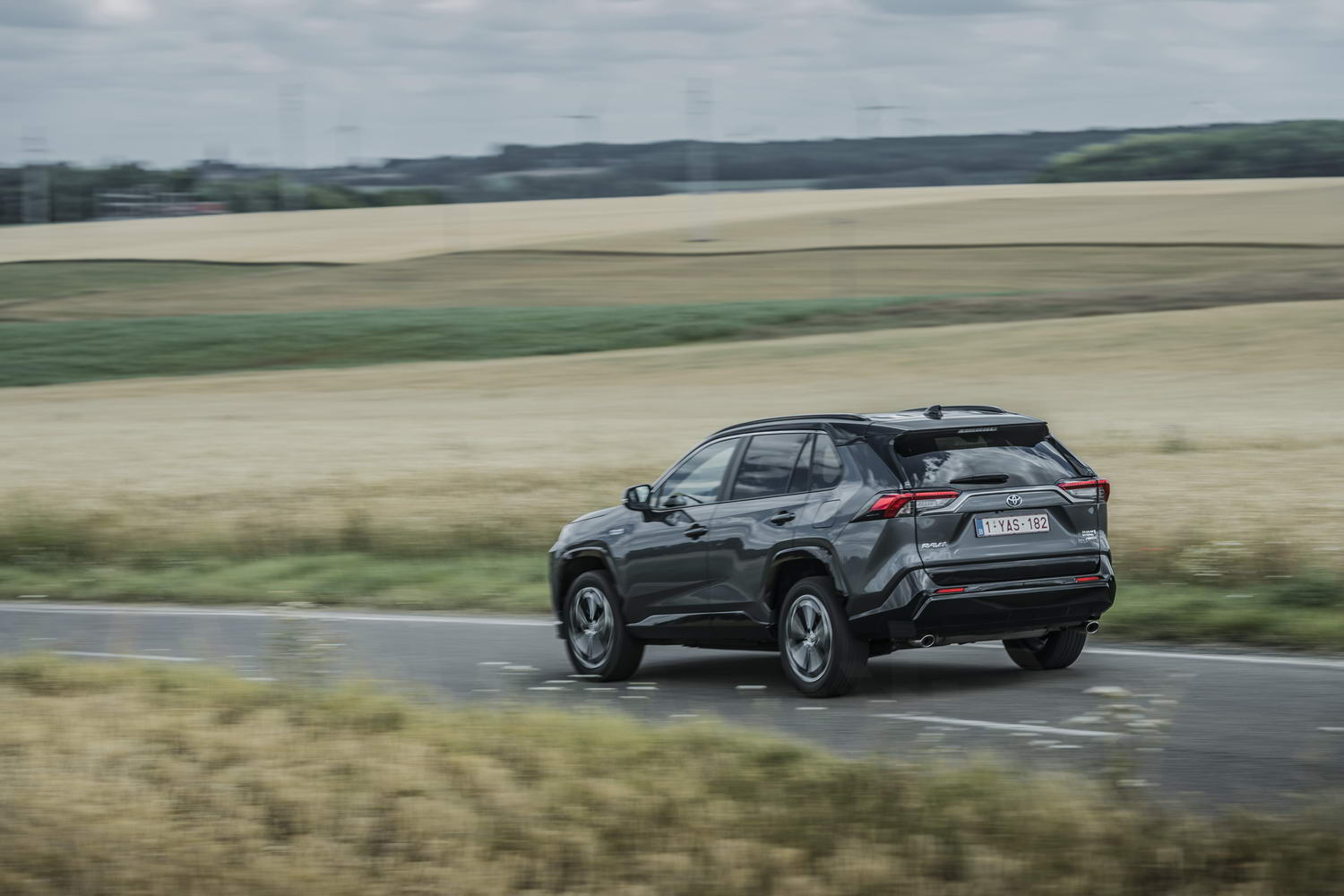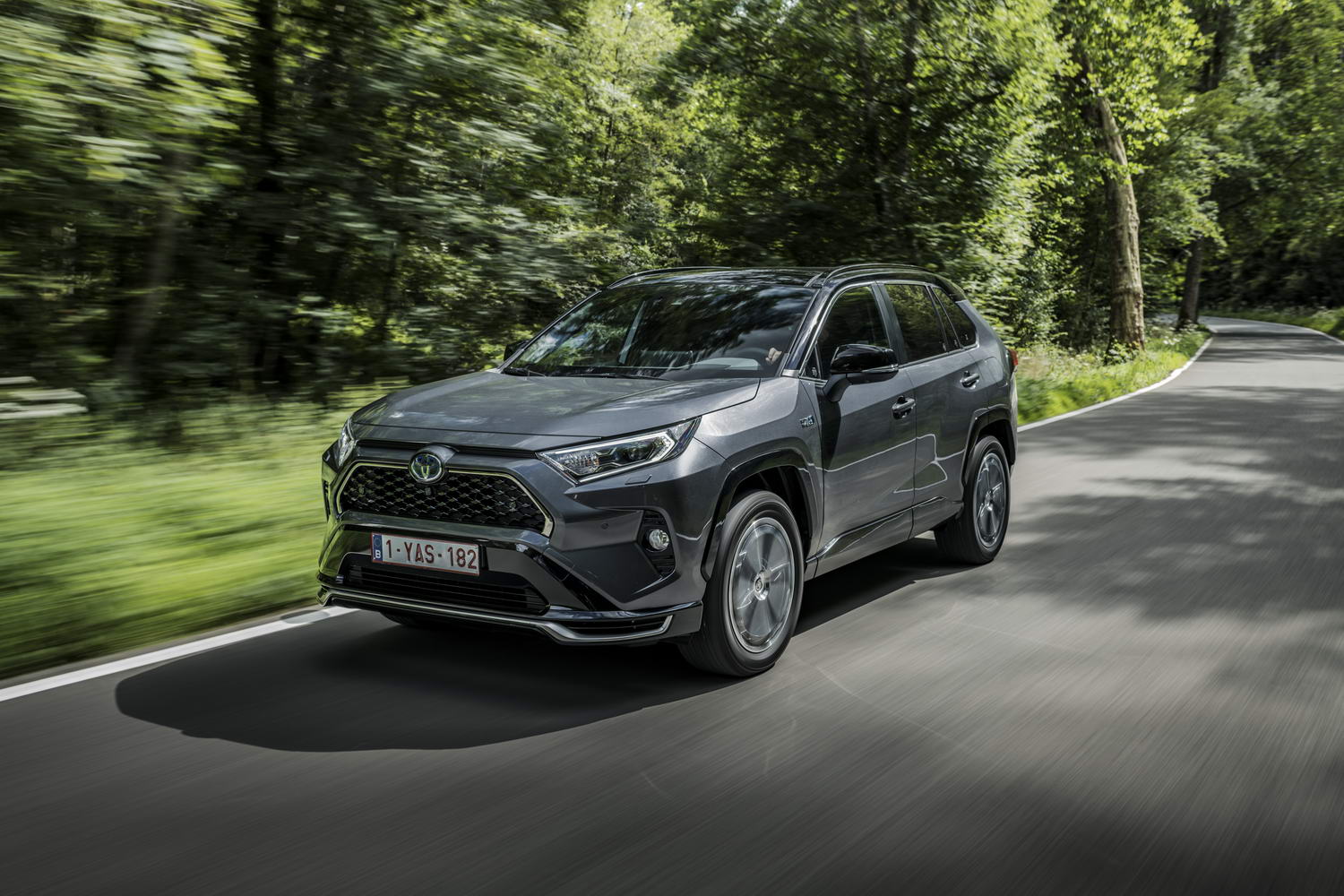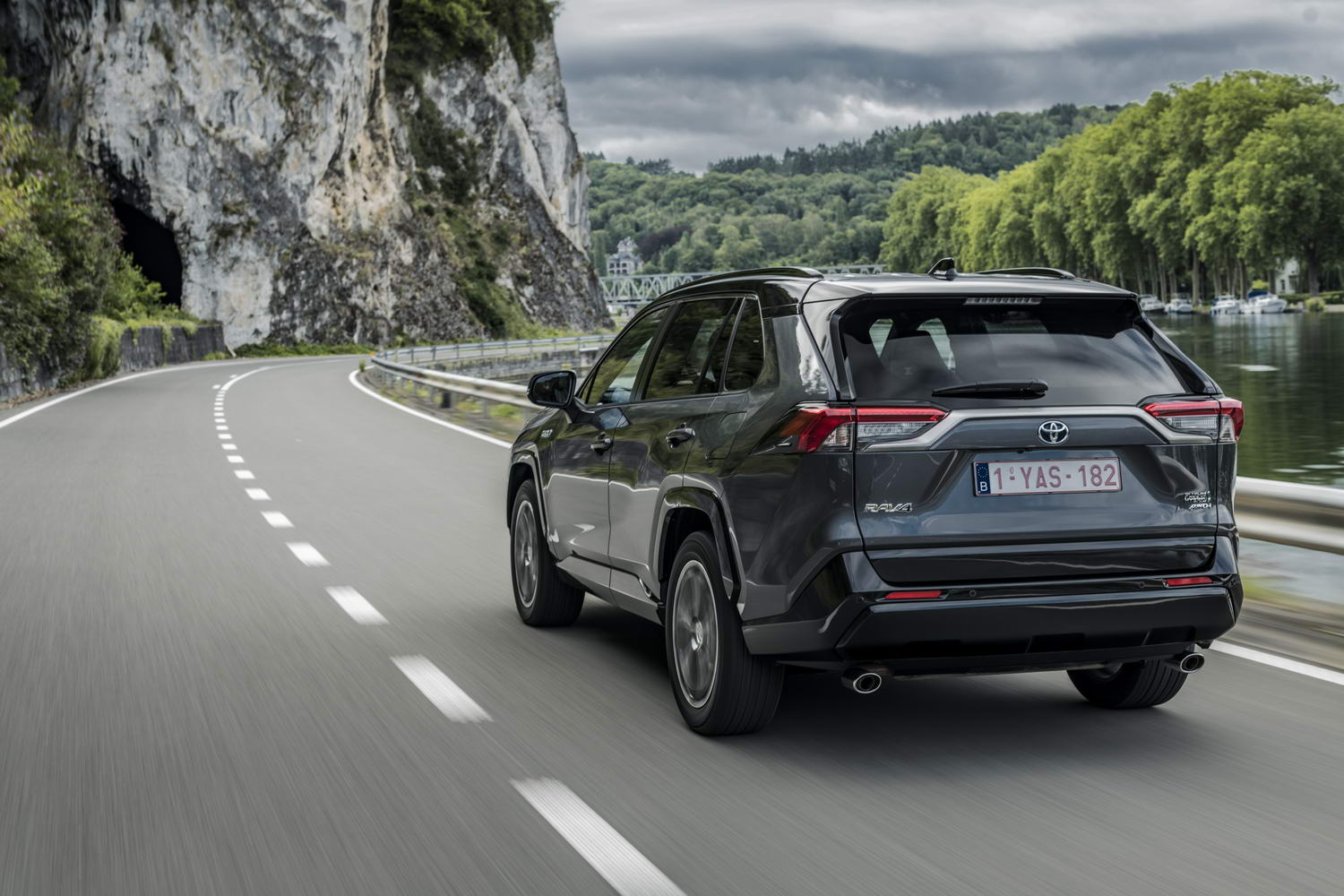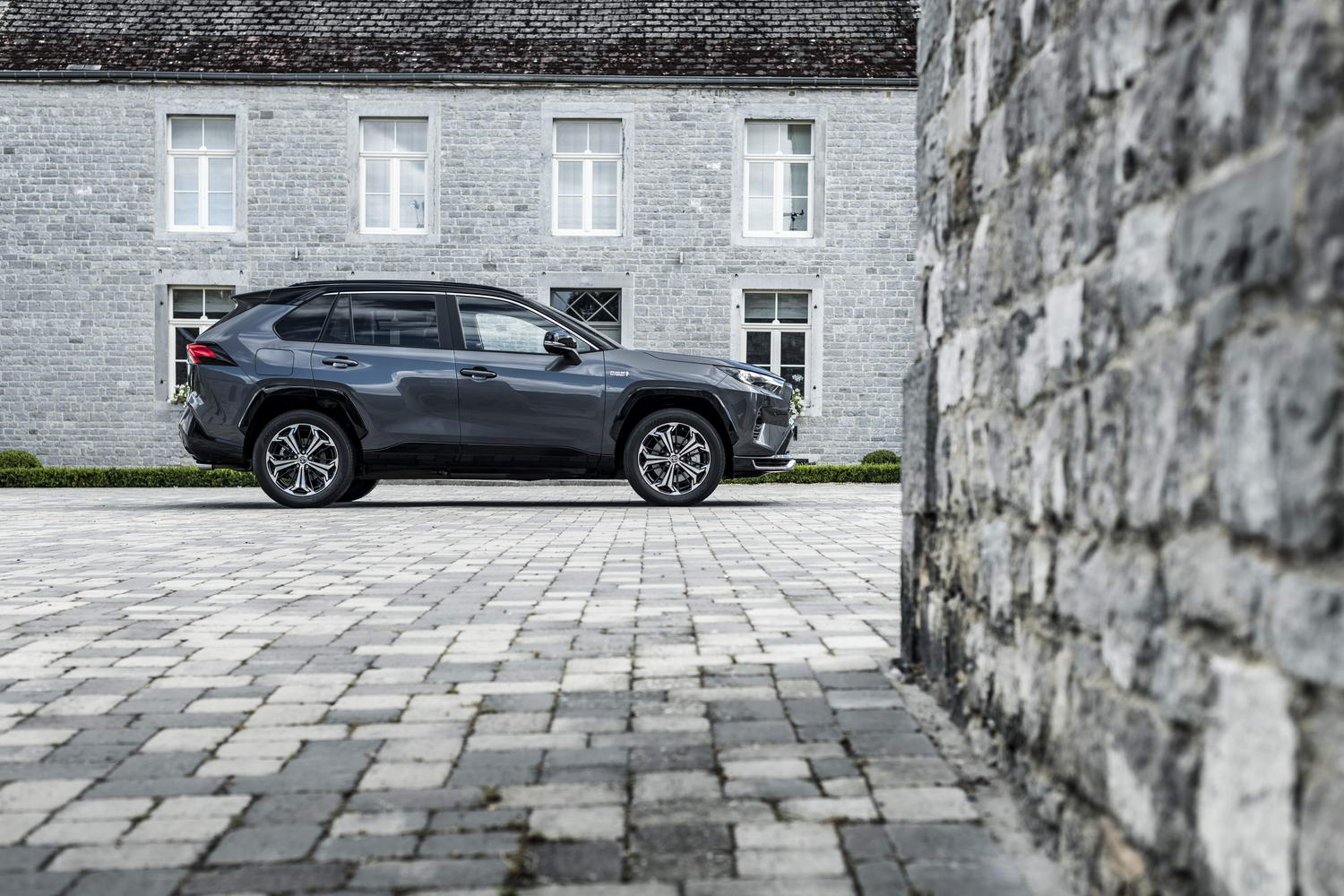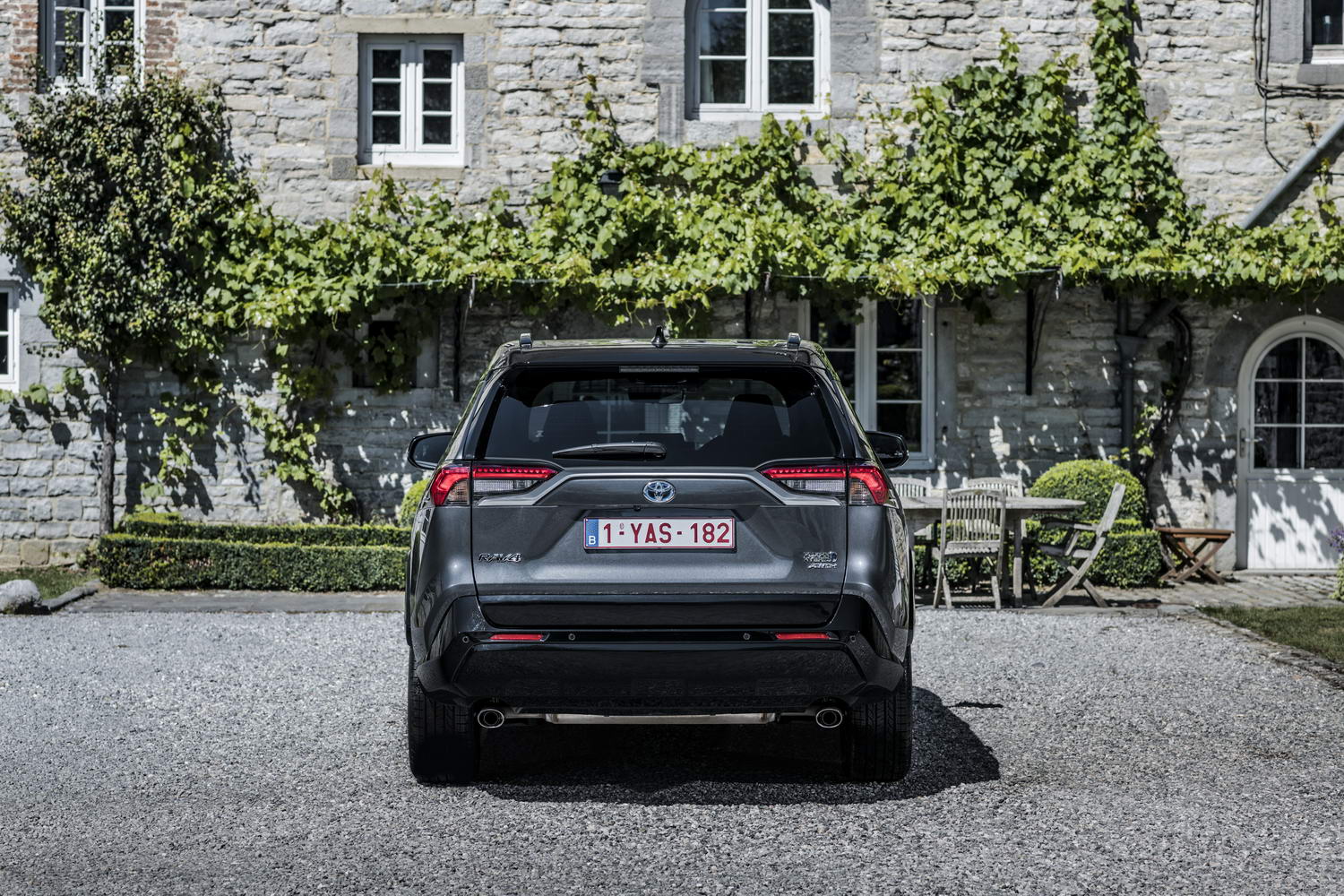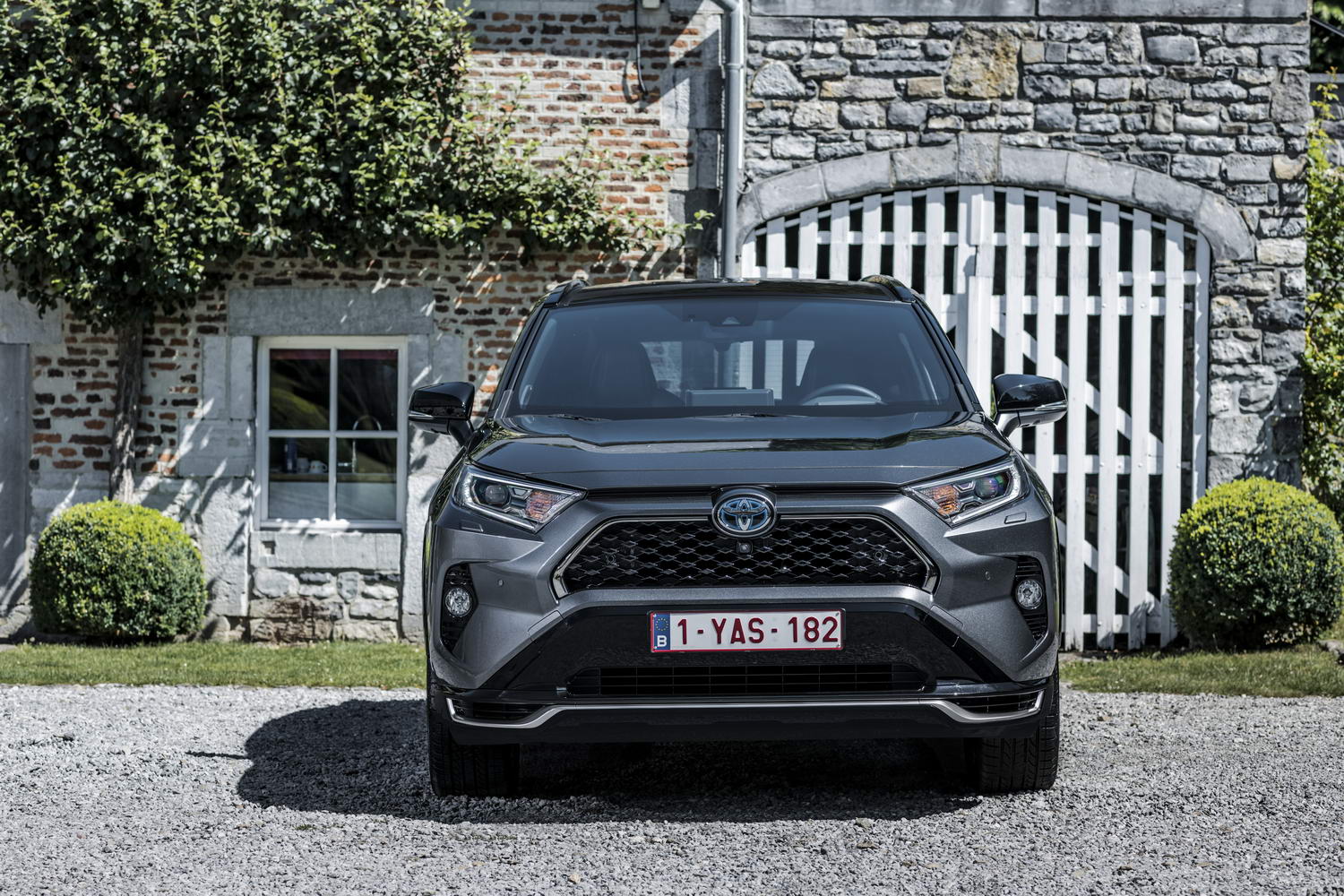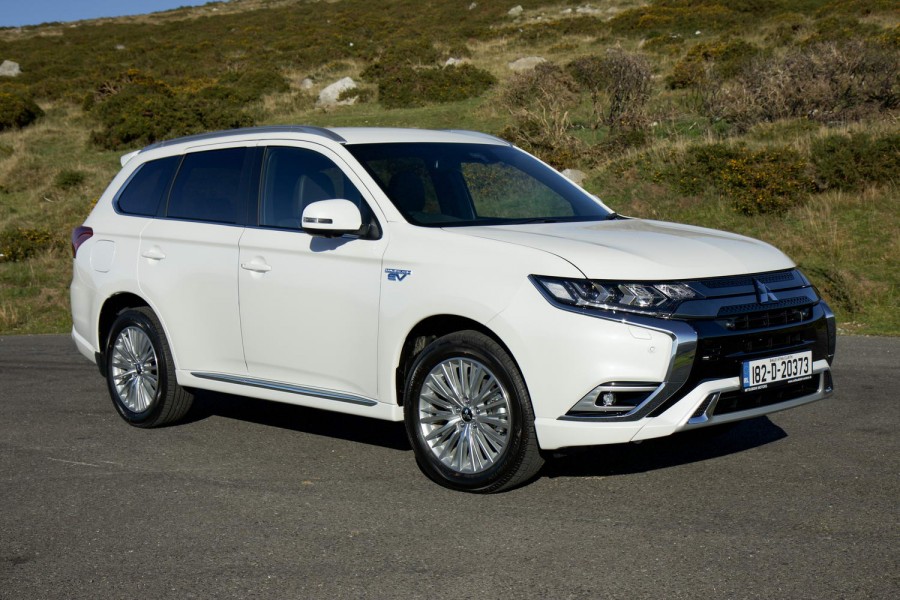Toyota takes its RAV4 Hybrid AWD-i and upgrades the front electric motor, upscales the battery pack to a big lithium-ion unit and then adds a mains charging point for its first plug-in hybrid model outside of the Prius line. Is the RAV4 Plug-In Hybrid worth going for, over and above the regular hybrid model?
In the metal
The current fifth-gen Toyota RAV4 is a smashing-looking SUV and having the Plug-In Hybrid version does nothing to change our opinion on that front. The new variant gains some bespoke styling cues to mark it out from its 'regular' hybrid brethren, such as a black mesh radiator grille, a bespoke design of 19-inch alloy wheels, a metallic front-bumper moulding and then 'dark plating' under-runs at both ends of the car, but visually it doesn't scream about the fact it has far greater electric-driving capabilities. The Type 2 charging point, which is the main item of differentiation between this model and the RAV4 Hybrid, is hidden behind what looks like a second fuel-filler flap on the offside-rear of the vehicle. On that note: you get two charging cables as standard, a Mode 2 item for hooking up to a three-pin domestic socket and a Mode 3 version for connecting to a wallbox or public charging point. On the former, it'll take 7.5 hours to charge the RAV4 Plug-In Hybrid up and on the latter, 2.5 hours at 32 amps AC.
Inside, the RAV4 Plug-In Hybrid has a leather-lined cabin with its own design of seats, but again it will be comfortingly familiar to you if you currently own a Mk5 RAV4. There are extra displays in the part-digital instrument cluster to show the clever energy management that is going on, of course, and slightly more complex switchgear next to the shift lever to control the electric and hybrid systems, and also to cycle through the drive modes of Eco, Normal and Sport (all tastefully rendered in green, blue and red respectively on the button itself as you click through each setting, and then the relevant colour is correspondingly highlighted in the instrument cluster too). But it's largely as you were in terms of appearance and ergonomics. The ample passenger space seems unaffected by addition of the battery pack underneath the vehicle's floor, but the boot does sacrifice a small amount of capacity by the upgrade from hybrid-electric vehicle to plug-in hybrid-electric vehicle - it's down to the tune of 60 litres to 520 litres on this new model.
Driving it
What you have to get your head around here is that the RAV4 Plug-In Hybrid is based upon the RAV4 Hybrid AWD-i. This means that, unlike other plug-in hybrids - such as the Opel Grandland X Hybrid4 - that perhaps 'start life' as plain petrol or diesel vehicles, when the RAV4 Plug-In Hybrid has 'exhausted' its main 18.1kWh lithium-ion battery pack and can no longer run at all times in electric vehicle (EV) mode alone, then it resorts to being a petrol-electric series hybrid like the other RAV4s. Sound confusing? Then allow us to try and explain as succinctly as possible.
In the RAV4 Hybrid, there's a 1.1kWh nickel metal-hydride (NiMH) battery to power either two or three motors, depending on whether you've gone for the two-wheel-drive model or not. This allows for short periods of EV driving, normally in towns or when coasting, and the battery is permanently recharged by the kinetic energy of the wheels rotating or by the driver activating the brakes, plus a little bit of feed coming from the 2.5-litre petrol engine up front.
What Toyota has done for the Plug-In Hybrid is take the exact same drivetrain system as a Hybrid AWD-i, replaced the NiMH battery with a lithium-ion (Li-ion) pack that is a much larger 18.1kWh, fitted a larger 134kW (180hp) front electric motor (it's 88kW, or 118hp, on the Hybrid) and then provided a Type 2 charging port and 6.6kW onboard charger - so that you can re-juice the SUV's electrical system from the mains, or you can use the engine/brakes while on the move to put some kWh back into the battery.
However, the cleverness is that the Plug-In Hybrid always keeps some of its Li-ion battery pack in reserve so that it can operate like the Hybrid at all times. To that end, the analogue battery gauge in the Toyota's dashboard has a green section and then a blue section: when the needle is in the green section, you can run the SUV as a plug-in hybrid and travel in EV Mode at up to 135km/h, the engine never once kicking in unless you switch it to HV Mode (hybrid) or Auto; if it's in the blue section, then the RAV4 Plug-In operates like a normal Toyota hybrid, offering you limited access to EV running but never totally ceasing such zero-emission activities either.
The pay-off of this is that you should get much better fuel economy from the RAV4 Plug-In Hybrid than you would from any other PHEV once the battery is depleted. And so it proved for us - with no charge showing in the green bit of the Toyota's in-car electric gauge, it still managed to turn in 54.5mpg (5.2 litres/100km) on an undulating, stop-start drive through hilly terrain in cold conditions. It could dip into and out of EV mode at times, but in general it was running as a series hybrid during this time. That's a deeply impressive economy return, then, as most plug-in hybrids tend to drop into the mid-30s and even the high-20s for mpg (30mpg is 9.4 litres/100km, for reference) when you're running them without charge.
Not only that, but the RAV4 has an excellent all-electric range of 75km. That's quite astounding for a plug-in hybrid and seems to vindicate Toyota's decision to go all-in on the belt-and-braces hybrid tech. However, as with any plug-in hybrid, as technically adept as the execution of this package has been by the Japanese company, there are compromises. The first is that the RAV4 Plug-In Hybrid is heavy. It weighs in at 1,975kg at its heaviest, significantly beyond the 1,775kg of the AWD-i Hybrid. This rather negates one of the Plug-In Hybrid's headline figures, its remarkable peak power output of 306hp, because the RAV4 doesn't feel as quick as either that horsepower claim or the six-second 0-100km/h time might suggest. Oh, it's not bad, granted, and it certainly feels more fleet of foot in a straight line than the 222hp RAV4 Hybrid AWD-i, but don't go thinking this is a high-performance GR RAV4 in disguise.
And mention of a straight line there was pertinent because the other thing the RAV4 Hybrid is not is sharp in the corners. Toyota's New Global Architecture (TNGA) chassis has rejuvenated the company's dynamics across the whole product range, making all of its vehicles fun to drive whether they're performance variants or not, but of all the models we've tried so far, it's the RAV4 that is the TNGA-based machine that is least thrilling in the corners. And that's us talking about the Hybrid - this Plug-In Hybrid is even heavier at the nose, portlier overall and simply isn't that comfortable being pushed through a series of bends. It understeers fairly easily and there's a considerable amount of body lean to work with too, so fast direction changes feel unnerving and imprecise.
That said, the sheer refinement of the whole package is exceptional. The RAV4 Plug-In Hybrid rides beautifully well in town and it's only the worst of craters and manhole covers in the road surface that are amplified slightly too much in the cabin. Out on open road and motorways, this Toyota rolls along really smoothly and we like the petrol-electric drivetrain, as Toyota has made great strides in making both the 2.5-litre four-cylinder petrol engine and its E-CVT automatic transmission much quieter and less coarse than in older generations of its vehicles. True, absolutely mash the throttle in the RAV4 Plug-In Hybrid and you do still get background traces of the traditional CVT 'pained yelling', but these instances are far rarer than they were in the incredibly underwhelming old RAV4 Hybrid, and they're not as loudly abrasive on the ears as they were before, either. We've also got no doubts that the RAV can do its claimed 75km on electric power alone if you treat it gently, although if you drive it like we did on extra-urban routes then something more like 50km is going to see your Toyota SUV switching from being a Plug-In to just a Hybrid vehicle, we reckon.
What you get for your money
We're still waiting for Toyota Ireland to provide a price for the Plug-In Hybrid version of the RAV4, so we can't give this section a mark yet. The cheapest AWD model of the Hybrid is the €46,185 Sol and as there's much more mechanical complexity to the Plug-In's underpinnings, it's likely it will work out to be more expensive to buy than the existing models. Nevertheless, its much lower CO2 output should help with taxes, so we'll wait to see if the RAV4 Plug-In Hybrid proves to be the default choice here in Ireland, or whether you're just better off sticking with the 'plain' Hybrid instead.
Summary
The key issue here will be how much more expensive the RAV4 Plug-In Hybrid will be when compared to the Hybrid AWD-i, once Toyota Ireland announces prices and specs. If it's not a huge margin between the two, then the significantly improved all-electric range of this new model will make it the one you should choose - if, as with any other plug-in hybrid, you actually do plug it in a lot of the time to ensure you get the best of its clever two-mode powertrain. However, if it turns out to be a lot dearer than the Hybrid, then we'd advocate staying with the 222hp non-plug-in model, which is a decent, economical and likeable SUV as it is. Nevertheless, as a first attempt at a mid-sized plug-in hybrid SUV goes, this Toyota RAV4 puts in an all-round polished performance.


